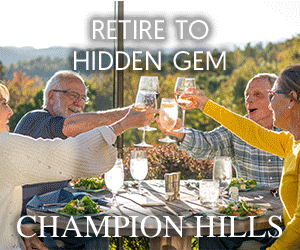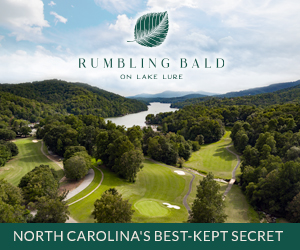By David Droschak
The work is complete …. Now the reviews start.
In what some have described as a bold move after two successful U.S. Opens and a unique USGA double-header on the horizon in 2014, Pinehurst Resort is ready to unveil the throwback design of its classic No. 2 course to the golfing public.
One of the world’s highest-ranked courses, designed by the legendary Donald Ross, was closed for four months over the winter as the architectural team of Bill Coore and Ben Crenshaw polished off the finishing topography touches on the major calling-card of Sandhills golf.
“The intrigue is building,” said Bob Farren, the director of grounds and golf course management at Pinehurst Resort who helped coordinate No. 2’s overhaul.
After three decades of rampant grass growth to the very perimeter of the pine tree line, Pinehurst officials set out to reclaim the Ross masterpiece, hiring the former Masters champion and his partner to pour over old archived photos and dig in the sandy soil to restore the famed course as Ross had left it in the 1940s.
“What was fascinating to us was one of our first exercises was to locate the mainline irrigation system, which was 70 years old,” Crenshaw said. “We marked those with a flag and you could start to see the swings and shapes of the holes. It was rudimentary, but it was extremely helpful. It was like looking at somebody’s backbone.”
The new design reclaims many of the natural sandy waste areas that Ross originally intended, creating a “corridor” for shot-making strategy from tee-to-green, much of which was lost on a U.S. golf community that viewed “greener” as being “greater” during much of the 1980s and ‘90s.
“The Pinehurst look of wispy sand off the perimeter with pine needles and wire grass is very much a part of the native Sandhills,” Crenshaw said. “To us, it was a look that people had remembered for so long. The course was mostly grass when we started the project.”
And although the famed turtleback greens were re-sodded, their designs remained untouched (except for the right side of No. 15) by the Crenshaw design firm, which focused on the interior and re-creating the raw edges of the North Carolina golfing treasure.
“One other neat thing about this project is I look at things from a white tee perspective,” Farren said.”The minor projects on No.2 over the last decade were all U.S. Open driven, adding length, moving tees back, narrowing the fairways. With this project, there is more of an impact on the white tees. The members and resort guests will enjoy it because there is an impact for them on just about every hole.”
The comparisons will now begin:
• Is No. 2 easier or more difficult?
• Who will embrace the design more, pros or amateurs?
• What will the USGA’s reaction be to the finished product?
“The fact we’re having the U.S. Opens will help this project gain a lot of notoriety and a lot of excitement, and the U.S. Opens (both the men’s and women’s championships) will benefit in the sense that it is a different product, and a different type of test than the previous two played here,” Farren said.
“I’m sure there will be a difference and a divergent set of opinions; some people will like it a lot and others may not understand it,” Crenshaw added. “Both Opens in 2014 are vital and will be exciting for the area, but we wanted to do something that was good for the resort in the long term.”
Expect more practice rounds by the pros in the coming few years leading up to 2014, especially those who played the course in 1999 and ’05, its drastic changes offering a whole new set of challenges and obstacles.
“For the accomplished golfers, they are going to be hitting a lot of shots they don’t hit in normal events, like off of hard pan and around wire grass,” Farren said.
“I’m an 8-10 handicap guy, so the fairway widths are going to be much wider, reasonable for the guy who hits it 230 or so off the tee,” Farren added. “In other words, I can hit a 50-yard fairway and my ball isn’t going to be in 3-inch rough, and I can advance it. I don’t know if it’s going to be harder or easier, because we intend to get the course fast, and when the ball does head into the wire grass areas the unknown of where it’s going to end up will be something to see.”
“It will resemble Pinehurst as it used to be and that’s what we all want,” said Mike Davis, USGA Senior Director of Rules and Competitions.
Steering clear of 80,000 wire grass “hazards” replanted in sandy graveyards dotting the entire course – all from a nearby field in Jackson Springs — will offer a unique challenge for golfers of all levels.
“The whole concept of the restoration is for the course to be sustained in a natural environment,” Farren said. “There couldn’t be anything more natural than literally transplanting those wire grass plants from the Sandhills and replanting them. And they will continue to evolve over years and years. Some will grow, some won’t grow. The whole concept of that sandscape or wire grass rough is eliminating or minimizing the amount of water we use because they normally don’t get water, except rain water in the forest.
“It is the architect’s desires to leave them as natural as they can be. Some will be little, some will get stepped on, some will get more water, some will be out in the sun, some in the shade,” he added. “There won’t be any consistency. There will be added mystery and adventure as the ball leaves the fairway – to see of it gets behind a big plant, a little plant or no plant at all.”
The entire wire grass replanting process – the desired look — turned into some sort of mad scientific experiment for the Pinehurst crew as 1,000 plants went into the ground each day for a period of two months.
“There is a learned skill or art to doing it so they don’t look planted, they don’t look in clusters of four and six, and don’t look like they are in straight lines,” Farren said. “It was really hard to avoid doing that. You know, people are used to planting tulip gardens in straight lines.”
Crenshaw describes the changes made at No. 2 a return to “that dimensional look, that perspective, the shapes of the holes that Ross intended.”
The biggest changes to the naked eye? Probably the tee shots on the 7th and 11th holes.
The back tees on No. 7 have been taken across the small access road, while the forward tees have been leveled to almost flat with the fairway, which has been widened at the dogleg turn. A larger sandscape area will guard the dogleg and the greenside bunkers have also been changed.
“When golfers get up on that one, they are going to say, ‘Wow, this is different.’ The 7th hole will hit them in the face,” Farren said.
On the par-4 11th hole, the turf has been removed from the back tee to the fairway, meaning golfers will need almost a 200-yard carry to reach green grass. “That’s a really hard hole now, with a changed tee shot perspective with all that sand in front of you,” Farren said.
Crenshaw’s involvement in the project turned out to be a natural fit, considering he’s one of the touring pros who wears his sport’s history close to his heart. Meanwhile, Coore knows the importance of No. 2 since he’s a Wake Forest graduate.
“My goodness, on a 1-10 scale going into it, during the concept and discussion stages, if we get an 8 out of it in terms of satisfaction level it would have been good,” Farren said. “But working with the two of them it is over the top. It’s a 10.
“The attention to detail and the reverence they placed on No. 2, and wanting to be on the conservative side was unbelievable, with just little things liking taking 6 feet of turf out. They may look at it three times and they may take out 4 feet and come back and take 2 more. You wouldn’t know it by looking at some of it because it looks pretty drastic, but they really were terrific studying the photography we had and just being out there on the ground a lot. When they were here they were out there from daylight to dark, walking every square foot of it.”
Like most architects, Coore and Crenshaw will now sit back and leave the review process to the golfing public.
“Golf courses don’t remain static, and you have to be vigilant in that you see and how it is presented with maintenance issues, technology, all sorts of things,” Crenshaw said.
“When we were presented with the idea with doing something in Pinehurst it was a very daunting decision and obviously a huge honor,” the former Masters champion added. “Pinehurst has always been different in that it has been a leader in its involvement with the USGA … and it is held in such high esteem. No. 2 is very much tied to the land that it sits upon and the reason why Ross loved this place more than any other place in the United States.”
Pinehurst Resort has launched a website www.pinehurstnumber2.com for golfers to find out more information on the Coore-Crenshaw restoration.
“This is something the average golfer is not going to encounter on a regular basis,” USGA’s Davis said of the new-look No. 2. “This is back to the way golf used to be. When they built golf courses back then, they would be concerned about having good teeing grounds, good fairways and good greens. Everything else was essentially the lay of the land, what was natural.”
On Newsstands March 2, 2011

















